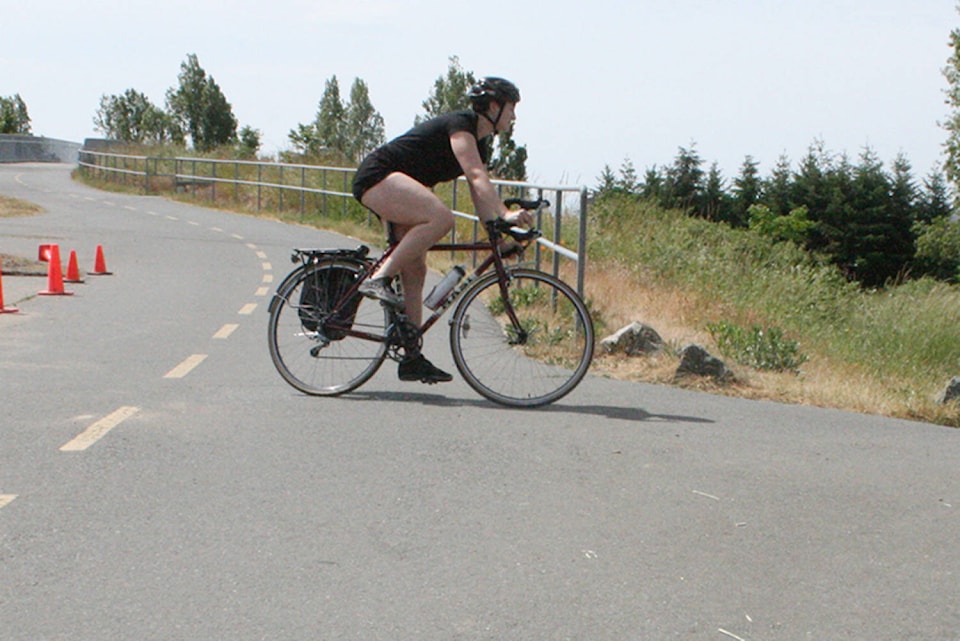If you build it, they will come.
That is the message from Corey Burger, policy and infrastructure chair, with the Greater Victoria Cycling Coalition.
Burger said new census data released last week shows new bike infrastructure matters. “Some of the highest growth areas were where we saw lots of new bike infrastructure in the past five years,” he said. “One of those areas was in eastern Saanich around the [University of Victoria], where Saanich built the new McKenzie and Shelbourne bike lanes, as well as many small improvements. We also saw that where infrastructure hasn’t been built, biking is flat or falling.”
Data released last week shows Greater Victoria a national leader in sustainable transportation, which Statistics Canada defines as “modes of transportation that have a smaller net impact on the environment or transportation infrastructure than cars and heavy trucks, or a near‑zero net impact.” They include public transit, car-pooling, as well as forms of active transportation, such as walking and cycling.
According to figures, just under 39 per cent of 170,830 employed commuters in the Victoria Census Metropolitan Area (CMA) use sustainable forms of transportation. A total of 10.9 per cent of commuters in 2016 rode public transit. Eleven per cent car-pooled. Just over 10 per cent walked to work, while another 6.6 per cent of commuters cycled.
But these regional numbers vary across communities, with the share of active commuters (those who walk or bike) dropping further out from the region’s urban core.
Consider the City of Victoria. Of its 42,965 commuters, 23.3 per cent walk to work, while another 11.1 per cent cycle. These rates drop off significantly in Saanich, where about 6.3 per cent of residents walk or cycle to work, a figure below the national average of seven per cent. These rates are even lower in West Shore communities.
Saanich, said Burger, only slightly lags behind the regional average (6.6 per cent) when it comes to cycling, and ahead of the provincial (2.5 per cent) and national (1.4 per cent) averages. Saanich actually ranks among the Top 10 municipalities in Canada, when it comes to cycling to work.
This said, Burger acknowledges that Saanich lags behind Victoria, Esquimalt and Oak Bay. Several reasons account for this fact, he said. They include among others post-war suburb land-use, which did not tend to be very bike-friendly. Trip distances in rural Saanich also make biking a less competitive choice, he added. He also added that Statistics Canada exclusively measured work trips.
“Because they don’t ask about mode for other trips, such as trips to school, you aren’t seeing UVic and Camosun students pushing up the bike numbers,” said Burger. “Contrast the census data with CRD bike count data, where locations near UVic can be as busy downtown or near [Canadian Forces’ Base] Esquimalt.”
While Saanich has come a long way, more needs to be done, he said. Much of the infrastructure installed over the last 25 years isn’t truly comfortable enough for all ages and abilities (AAA), nor does it form a complete network, he said. “We know people will bike if the right infrastructure is in place,” he said. “We see that with the regional trails. Although not quite AAA, they are the closest we have in the region and they form a relatively connected network.”
Other growth areas over the past five years include the E&N Rail Trail, from [Victoria] West all the way through to eastern Colwood where it and the Galloping Goose form a single trail, said Burger.
“We’ve also started to see both AAA bikeways and gap closure accelerate in the past few years,” he said. “Examples include the new protected bike lane on Borden Street (which also closed a gap in the Lochside Regional Trail) or Pandora Ave downtown [Victoria].”
Saanich has also launched a number of initiatives to improve local cycling networks, with set-backs along the way.
